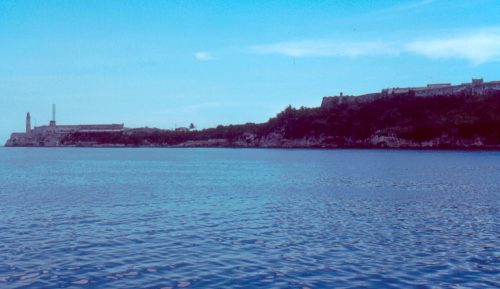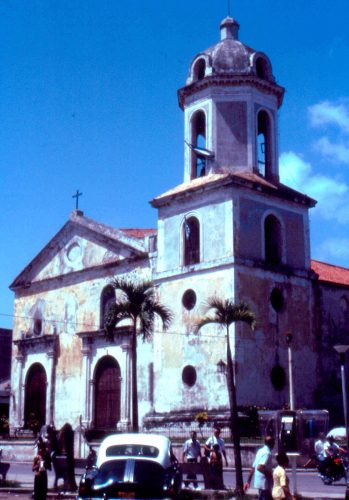It’s perhaps amazing to realize that the historical “tracks” of the Calusa reach well beyond Florida, not just to Cuba where the last remnant Calusa people settled in the 18th century, but also across the Atlantic Ocean to Spain, where the collected documentary record of the Spanish colonial effort in Florida is held at the Archivo General de Indias in Seville.

Historians have studied an impressive range of documents, adding to our knowledge of Calusa culture in ways that archaeology simply cannot address. But many potential sources for new information have yet to be explored.
To this end, this past summer I was fortunate enough to make two trips overseas in search of documentary sources about the Calusa. The first was a month-long research trip to the archives in Seville, where I delved into a wide range of documents, from letters and dispatches by governors and bishops in Florida and Cuba to detailed financial accounting records from Havana. I was pleased to find quite a bit of material that has been over- looked or under-utilized by Florida scholars.
One fascinating package of materials is the 1569 lawsuit by Captain Francisco de Reynoso demanding payment for his promised salary during three years stationed at Fort San Antón at the Calusa capital on Mound Key. In addition to the original 1566 order dispatching Reynoso with more than 50 soldiers to construct the fort (signed by Pedro Menéndez de Avilés himself), the papers include signed testimony by witness Hernando de Escalante Fontaneda, the famous shipwreck survivor and ex-Calusa captive who had served alongside Reynoso throughout the fort’s three-year existence.

I also ran across new information on the disposition of 270 refugee Calusa and other South Florida Indian people who fled to Cuba in 1711, and quite a bit of new information on their final years in Florida. After years of devastating raids by immigrant Creek Indians, just over 60 South Florida Indian people departed for Cuba in 1760, settling at a place called “La Cabaña” across the bay from downtown Havana. After the 1763 construction of a new stone fort named San Carlos in that location, many or all of these refugees may have joined Florida’s 89 remnant mission Indians in the nearby church of Nuestra Señora de la Asunción in the suburb of Guanabacoa.
Some of the most intriguing new material I found relates to the early Cuban fishing industry in Southwest Florida, and the commonplace transport of parties of Seminoles from Tampa and Sanibel to Havana for meetings and gifts during the 1780s and 1790s. The dominant presence of these immigrant Creeks/Seminoles across South Florida can be documented as early as the 1750s, and at present there seems no reason to suspect that there were any remnants of the Calusa in Florida after 1760.
My second trip was a week in Cuba, establish- ing contacts with Cuban archaeologists studying the earliest Spanish presence there, and laying the groundwork for future archival research trips. A highlight of the trip was a visit to the Asunción church in Guanabacoa, and Fort San Carlos de la Cabaña in Havana (see photos), both sites where remnant Calusa settled. Sincere thanks are due to Dr. David Noble in Decatur, Georgia for his generous support of this trip, and also to Dr. Vernon J. Knight at the University of Alabama for inviting me on the expedition. In future trips, I hope to delve deeper into Cuban archives to learn more of the Florida-Cuba connection, and how it relates to the decline of the Calusa and the emergence of the Seminole.
The new archival research does not mean that we will not be doing archaeological work at Pineland. Quite the contrary — we will begin new excavations here in 2003. But the Spanish writings are already adding exciting new information to the Calusa story as well as to the 18th- century history of Southwest Florida.
This article was taken from the Friends of the Randell Research Center Newsletter Vol 1, No. 4. December 2002.